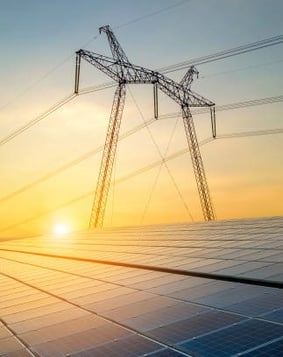Incorrigible Greenwashing Electricity Suppliers Must Go
Almost exactly a year ago, I reported about a direct mail solicitation received from one of those retail...
For years, Green Energy Consumers has tried to educate consumers about the possibilities and pitfalls of choosing an electricity supply. Here’s a case study, from a recent personal experience.
 About 10 days ago, I received an offer in the mail from a retail supplier for power that would cost 17.4 cents per kilowatt hour. According to the fine print, the price is good for 3 months. Three months! They further explain that after three months, the price is subject to change based upon “market conditions” and several costs including energy costs, operating costs, expenses, and profit margins. Oh.
About 10 days ago, I received an offer in the mail from a retail supplier for power that would cost 17.4 cents per kilowatt hour. According to the fine print, the price is good for 3 months. Three months! They further explain that after three months, the price is subject to change based upon “market conditions” and several costs including energy costs, operating costs, expenses, and profit margins. Oh.
But I’m a green guy and so I noticed that for 17.4 cents per kilowatt hour, I would get 100% renewable energy. The fine print says my power usage would be paired with Renewable Energy Certificates (RECs). Specifically, it says, “Your service will always include 100% wind and solar RECs and the specific mix of each resource may vary from year to year. In 2022, the RECs for Massachusetts customers were 53% wind and 47% solar…from Maine, Massachusetts, New York, and North Carolina.”
Just a few days later, the same supplier sent me the same offer of 17.4 cents per kWh. I guess they want my business. But the second offer also said that RECs would come from CT, MA, ME, NH, NY, PA, IA, NC, RI, and VT.
Fact: Soliciting customers by direct mail is expensive. They have to buy a list, print up material, and pay postage, knowing that most people are not going to bite. That results in a high cost of customer acquisition. And that has consequences.
That’s not a trick question. The devil is in the details, if not in Iowa or North Carolina. Once again, this supplier’s business model is predicated on two things: First, they hope you won’t notice when, after three months, they raise the price from 17.4 cents to something higher. Second, they hope you don’t know the difference between a REC from a wind or solar generator in New England from one produced in Iowa or North Carolina. So we will tell you – there’s a big difference.
Green Energy Consumers operates in Rhode Island and Massachusetts, which is part of the New England power grid. Chances are that you live in this region. So we’re about putting more new renewables onto our grid so that we reduce greenhouse gases and other pollutants that cause harm to public health, create jobs here, and build new capacity so that we can become less dependent on imported fossil fuels. Because we have been at this for over twenty years, we know that building renewable energy in New England is more difficult than in the wide-open spaces where the deer and buffalo roam. For that reason, RECs cost more here than in Iowa. It’s great that Iowa is building wind projects, but those projects don’t need more money from Massachusetts consumers to be profitable. In other words, your purchase of a REC from Iowa doesn’t save the planet. It just fattens the wallets of generators there and the company sending me these direct mail offers. There’s a term for this: Greenwashing.

As stated above, the supplier seeking my money promises some wind and solar RECs from CT, MA, ME, NH, NY, PA, IA, NC, RI, and VT. Some of those states are part of our New England power system, so that’s cool. But Massachusetts law says that in 2024, suppliers are required to have 28% of their mix coming from “Class I” projects located in our six New England states. So, the real question is whether the remaining 72% will come from New England or be non-Class I from NY, PA, IA, or NC. We know for a fact that RECs in those states can be purchased for about $3.50 per MWh, less than a tenth of what Class I RECs cost from New England. You get what you pay for. We’ve written about this several times. Here’s a blog from 2015: Why Buying New England Class I RECs is the Only Way to Make the Switch.
Almost exactly a year ago, I reported about a direct mail solicitation received from one of those retail...
We take great pride in the fact that we, along with a company called Good Energy, took the model of municipal...
Comments